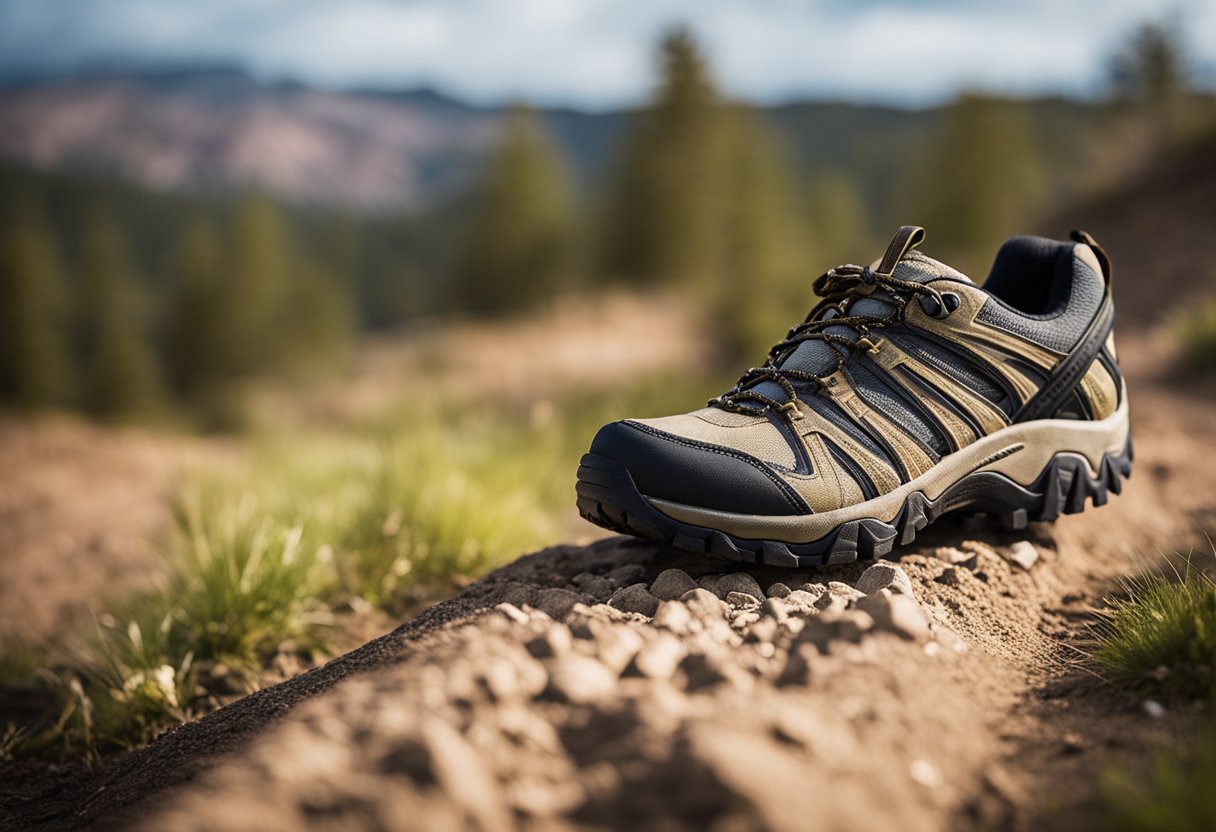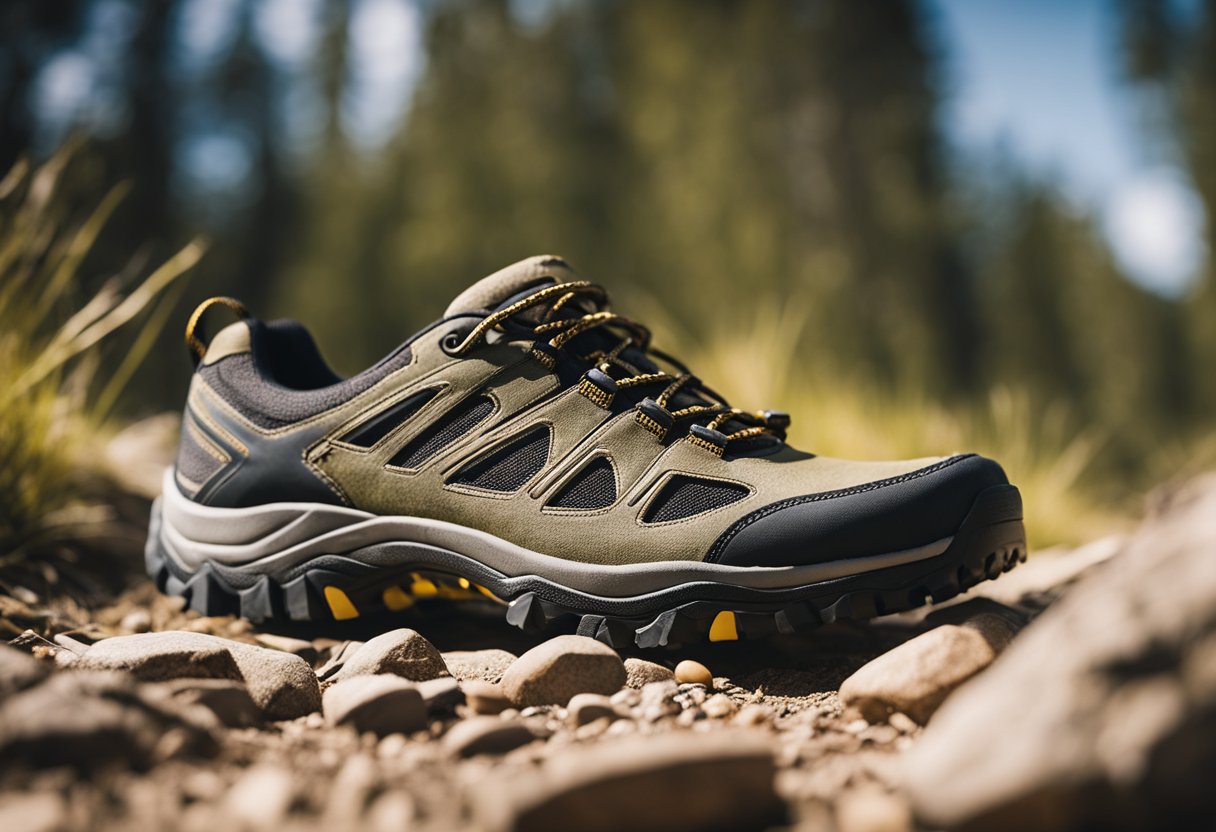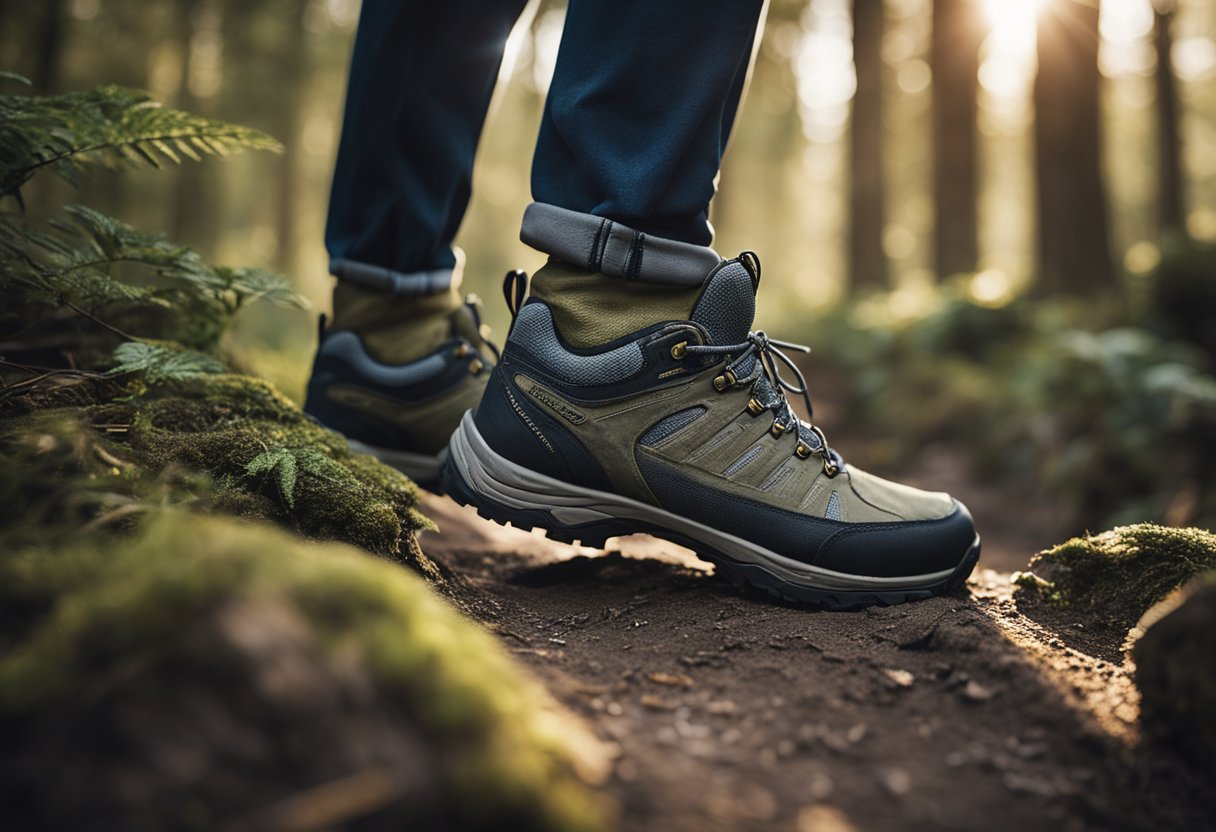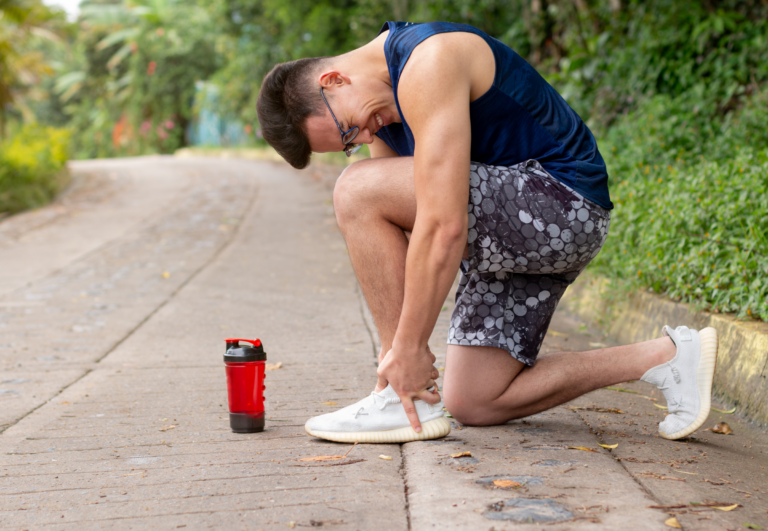The Role of Tread in Trail Running Shoes – A Guide to Understanding the Differences
When selecting the best trail running shoes, it’s crucial to focus on the tread, which is the key to traction and stability on varied terrains.
Trail shoes feature aggressive lugs for gripping loose or muddy surfaces, contrasting the flatter design of road shoes meant for pavement. For optimal performance, choose a lug depth that matches your running environment: deep for muddy trails, shallow for hard-packed paths, and medium for mixed terrain.
Additionally, the rubber compound should provide adequate grip in both wet and dry conditions. A proper fit, combined with the right balance of cushioning and flexibility, will enhance comfort and prevent injuries. Whether you’re a minimalist runner or seek maximum cushioning, ensure your trail shoes offer the necessary protection, traction, and durability to handle the specific challenges of your favorite trails.
Always remember that the right trail shoe tread can significantly improve your safety and running experience, acting as a reliable partner on every off-road adventure.

The Role of Tread on Your Trail Shoes
With extensive experience in trail running, I’m here to guide you on how the tread of your trail running shoes plays a pivotal role in your outdoor adventures.
Here’s a quick guide to help you understand the importance of tread types:
| Tread Type | Best for | Consideration |
|---|---|---|
| Deep and Aggressive | Muddy, loose, or rugged terrain | Stability and grip |
| Shallow and Tight | Less technical trails or mixed-use | Balance between traction and versatility |
| Moderately Deep | A balance for varied terrains | Multi-terrain use |
Importance of Tread in Trail Shoes
Tread is the foundation of trail running shoes that provides you with traction and stability on unpredictable terrain. It’s the arrangement of grooves and patterns on the outsole, where the deepness and spacing of the lugs—the noticeable cleats—determine grip. Enhanced tread with deep, well-spaced lugs is essential for muddy and soft trails to prevent slipping and to help you maintain balance.
Trail Running Shoes vs. Road Shoes
| Feature | Trail Running Shoes | Road Shoes |
|---|---|---|
| Tread and Lugs | Aggressive, deep lugs for varied terrain | Flatter, shallow lugs for smooth surfaces |
| Sole Rubber | Sticky rubber for extra traction | Softer foam for comfortable road running |
| Intended Usage | Rough, uneven trails | Paved paths and surfaces |
Trail running shoes are engineered with a more aggressive tread compared to road shoes, giving you the confidence to tackle diverse trails. Road shoes are better suited for smoother paths where a less pronounced tread reduces the exertion of your leg muscles on flat surfaces.
Different Types of Trail Shoes for Various Terrains
As you shop for your perfect trail companion, consider the types of terrain you’ll encounter:
- For rocky or loose surfaces, look for vibram outsoles or similar durable materials with medium lugs to bite into the ground.
- On muddy or soft trails, shoes with large, widely spaced lugs prevent mud from clogging and enhance your stability.
- Hard-packed trails call for trail shoes with shorter, closer-spaced lugs that provide a balance between grip and foot feedback.
In essence, savvy selection of your trail shoes based on tread design can vastly improve your running experience on trails.
Anatomy of a Trail Shoe

As someone with an extensive background in trail running, I’ll help you understand the key elements of trail running shoes that contribute to your performance and safety on the trails.
Examining the Sole and Tread Pattern
The outsole of your trail shoe is vital for gaining traction on uneven and slippery surfaces. The tread resembles the pattern on your car’s tires and is all about grip.
Lugs, which are the bumps on the outsole, dig into dirt and mud to provide stability. Lugs can vary in depth, with deeper ones for muddy terrain and shallower for hard-packed trails.
Be sure to choose a shoe with a tread pattern suited to your typical running terrain.
| Terrain Type | Recommended Lug Depth |
|---|---|
| Muddy | Deep |
| Hard-packed | Shallow |
| Varied | Medium |
Midsole and Cushioning Features
The midsole of your shoe is where the cushioning lives, and it’s essential for absorbing the shock of rocky or hard paths.
Look for cushion features that match your comfort preference and the ruggedness of your runs. Some shoes include a rock plate, a protective layer that shields your feet from sharp objects. A shank in the midsole adds stiffness and support, helping to protect against foot twisting.
Understanding Uppers and Protection
The upper part of the shoe wraps around your foot and offers protection and breathability. Materials here can range from lightweight mesh for breathability to reinforced waterproof materials for protection against the elements.
Toe caps and overlays add extra layers of defense against rocks and roots. A good upper will balance protection while still keeping your feet cool and comfortable.
Tread Performance Factors in Trail Shoes

As an expert in trail running gear, it’s essential to understand that the tread of your trail shoes is a crucial component affecting your performance on various terrains. Here’s a breakdown of how different aspects of the tread can influence your running experience.
Traction on Different Surfaces
Your trail shoes must be versatile to handle diverse surfaces. The rubber used in trail shoes is typically designed to provide grip on both wet and dry conditions. Shoes with rubber that is too soft may wear down quickly on rocky trails, whereas a too hard rubber can reduce traction on slick surfaces.
- Wet Traction: Look for hydrophilic rubber that maintains grip on slick rocks or muddy paths.
- Dry Traction: A harder rubber compound will often perform better on loose dirt and sandy trails.
Deep Lugs and Aggressive Tread for Technical Trails
For more technical trails with obstacles like roots, rocky inclines, or heavy mud, deep and aggressive lugs on the soles of your trail shoes can make a significant difference.
The deep lugs act like cleats, digging into the terrain to give you better stability and control.
| Trail Type | Lug Depth (mm) | Benefit |
|---|---|---|
| Rocky/Rooty Terrain | 4 – 6 | Increased stability |
| Soft Ground/Mud | 6+ | Enhanced traction |
Balance between Tread and Flexibility
While aggressive and deep lugs provide superior traction, your trail shoes should also offer a balance with flexibility for comfort and efficiency. A shoe too rigid can fatigue your feet, while excessive flexibility might not protect you from sharp rocks.
- Flex: A good trail shoe will bend at the forefoot but remain supportive under the arch.
- Balance: Trail shoes should provide a middle ground between a protective, rigid sole and a flexible, comfortable fit.
Selecting the right trail shoes with the appropriate tread pattern is essential for tackling the different challenges you’ll encounter on your runs. Each factor, from lug depth to tread material, plays a part in ensuring you have the traction and balance needed for both safety and performance on the trails.
Fit and Comfort

As an experienced trail runner, you’re well aware that the right fit and comfort in trail shoes can make all the difference on unpredictable terrain. This section dives into why a proper fit is essential, how it contributes to comfort and stability, and what to look for in the heel of your running shoes.
The Significance of Proper Fit for Trail Runners
Securing a proper fit in trail running shoes is crucial for preventing blisters and discomfort during your run. A shoe that fits well will snugly embrace your foot, offering a locked-in feel without constricting movement.
A wide toe box allows your toes to spread naturally for balance, especially on rugged trails, and helps avoid cramping and pressure points.
Comfort and Stability
The balance between comfort and stability in a trail shoe is delicate. Stability is key when navigating uneven ground, as it helps prevent rolling ankles and maintains your stride. Look for shoes that provide a comfortable midsole cushioning that adapts to the trail without compromising the foot’s connection to the terrain.
Heel and Heel-to-Toe Drop Considerations
Heel design in trail shoes offers protection and influences stride mechanics. The heel-to-toe drop refers to the slope between the heel and the forefoot.
Traditional shoes often have drops of 8-12mm, while zero-drop shoes position the heel and toe level to promote a more natural running posture. Your heel should feel secure without slipping, and the heel-to-toe drop should complement your natural stride.
Here’s a quick reference to keep in mind:
| Heel-to-Toe Drop | Effect on Running Posture |
|---|---|
| High Drop (8-12mm) | Encourages a heel-first strike |
| Low Drop (3-7mm) | Supports a midfoot strike |
| Zero Drop | Promotes a more natural stance |
Ensuring your trail shoes fit correctly and offer the right amount of comfort and stability is essential. Keep these points in mind as you find the perfect pair for your next off-road adventure.
Choosing the Right Trail Shoe

When you’re looking for a new trail running shoe, it’s essential to consider your specific needs and the types of terrain you’ll be tackling. Whether you prefer a minimalist feel or maximum cushioning, understanding your running style and the environment you’ll be in can determine the best shoe for your adventures.
Assessing Your Trail Running Style and Needs
Taking into account your individual trail running style is crucial. You should reflect on the terrain you frequent — rocky, muddy, or maybe a mix of environments. The type of trails you run on will influence the amount of traction and foot protection you need.
Minimalist vs. Maximum Cushioning Trail Shoes
If the barefoot or minimalist approach appeals to you, minimalist trail shoes offer less cushioning, promoting a more natural foot strike. On the flip side, trail shoes like the Hoka Speedgoat 5 provide maximum cushioning for a plush, protective ride, which can be essential for long-distance running on rugged trails.
The Best Trail Running Shoe for Different Types of Runners
The best trail running shoe for you depends on your specific needs:
- Minimalist runner: Look for lightweight, flexible shoes with enough grip for the trails you explore.
- Long-distance runner: You’ll benefit from shoes with more cushioning and support for sustained comfort.
Effective Tread for Running on Snow and Ice
When facing snowy or icy conditions, a trail shoe with a deep and aggressive tread pattern will improve your grip and stability. Shoes designed for winter conditions often feature special materials that provide traction even in colder temperatures.
Encountering Mud and Sand: A Guide for Tread Effectiveness
For muddy and sandy trails, your trail shoe tread should have widely spaced lugs to prevent buildup and maintain traction. A durable shoe with a gusseted tongue can also help keep debris out, ensuring your feet stay comfortable and secure.
By carefully evaluating your trail running style and the specific features you need, you’ll be better equipped to select the right trail shoe that offers the perfect balance of protection, cushioning, and traction for your trail adventures.
Safety and Protection on the Trail
As you embark on your trail adventures, prioritizing safety and protection is essential. The right tread on your trail shoes can prevent mishaps, while other design features protect your feet from the rugged terrain.
Preventing Slips and Falls with Adequate Tread
The tread on your trail shoes is like the tires on a car; it gives you the necessary traction to navigate through rough terrain. A deep and aggressive tread pattern grips onto the surfaces, reducing the risk of slips and falls. You’ll want to look for shoes that offer multi-directional lugs which create a better grip on uphill climbs and downhill descents.
Key Tread Features for Traction:
- Deep Lugs: Typically 4-6mm for optimal grip.
- Multi-Directional Lugs: Helps maintain stability in various directions.
Foot Protection Against Sharp Objects and Debris
Proper trail shoes should act as a safeguard, protecting your feet from sharp rocks and debris. A built-in rock plate between the midsole and outsole can absorb shock and prevent punctures. Uppers made from durable materials prevent abrasions and tears, and ensure that small stones or branches don’t interrupt your run.
Protective Elements:
- Rock Plate: Shields foot from sharp objects.
- Durable Upper: Resists tears and keeps debris out.
Additional Accessories: Gaiters and Lace Garages
Gaiters are an accessory that attach to your shoes to provide an extra layer of protection, keeping pebbles and dirt at bay. They secure around your ankle and over the shoe’s opening to prevent debris from entering. Meanwhile, a lace garage is a small pocket or loop on the tongue of the shoe where you can tuck your laces, preventing them from snagging on trail brush.
Accessories for Added Protection:
- Gaiters: Barrier against debris.
- Lace Garage: Keeps laces secure and out of the way.
Brand and Model Comparisons

Exploring the diverse landscape of trail shoe treads, you’ll discover unique patterns and features specific to each brand and model, each tailoring to different trail conditions and running experiences.
Popular Brands and Their Signature Treads
Altra
- Treads: Known for the distinctive “Balanced Cushioning” design promoting a natural foot position.
- Terrain Suitability: Versatile across varied trails.
Hoka
- Treads: Features the “Meta-Rocker” geometry aimed at a smooth ride.
- Terrain Suitability: Exceptional on rugged and uneven surfaces.
Salomon
- Treads: The “Contagrip” sole provides confident grip on wet and dry surfaces.
- Terrain Suitability: Performs well in muddy and technical trails.
Brooks
- Treads: The “TrailTack” sticky rubber outsole is made for better traction on both wet and dry surfaces.
- Terrain Suitability: Reliable on varied, less technical trails.
Hiking Boots Vs Trail Running Shoes
Hiking Boots
- Build: Durable with stiff soles and higher cut ankles for stability.
- Treads: Deep lugs for superior grip on rough terrain.
Trail Running Shoes
- Build: Lightweight and flexible with lower ankle cut for agility.
- Treads: Varied lug patterns designed for speed and responsiveness on trails.
When choosing between hiking boots and trail running shoes, consider your trail activities; hikes require the sturdiness of boots, while trail runs benefit from the agility of shoes.
Conclusion

When selecting trail running shoes, the importance of tread cannot be overstated. The aggressive tread on trail shoes is what provides you with necessary traction on uneven terrains such as mud, gravel, and loose dirt. The lugs, which are the cleats on the outsole, play a vital role in stabilizing your steps; the deeper and wider spaced the lugs, the better grip you get.
In contrast to road running shoes, trail shoes are designed to withstand the demands of off-road conditions. Weight is also a consideration, as heavier shoes offer more durability and protection on challenging trails, but may reduce your speed and efficiency.
Remember, your shoes are your primary connection to the trail, so choose wisely to ensure safety and enjoyment on your runs. Whether you’re navigating steep hills or crossing streams, your trail shoes should act as a trustworthy guide to carry you through.






